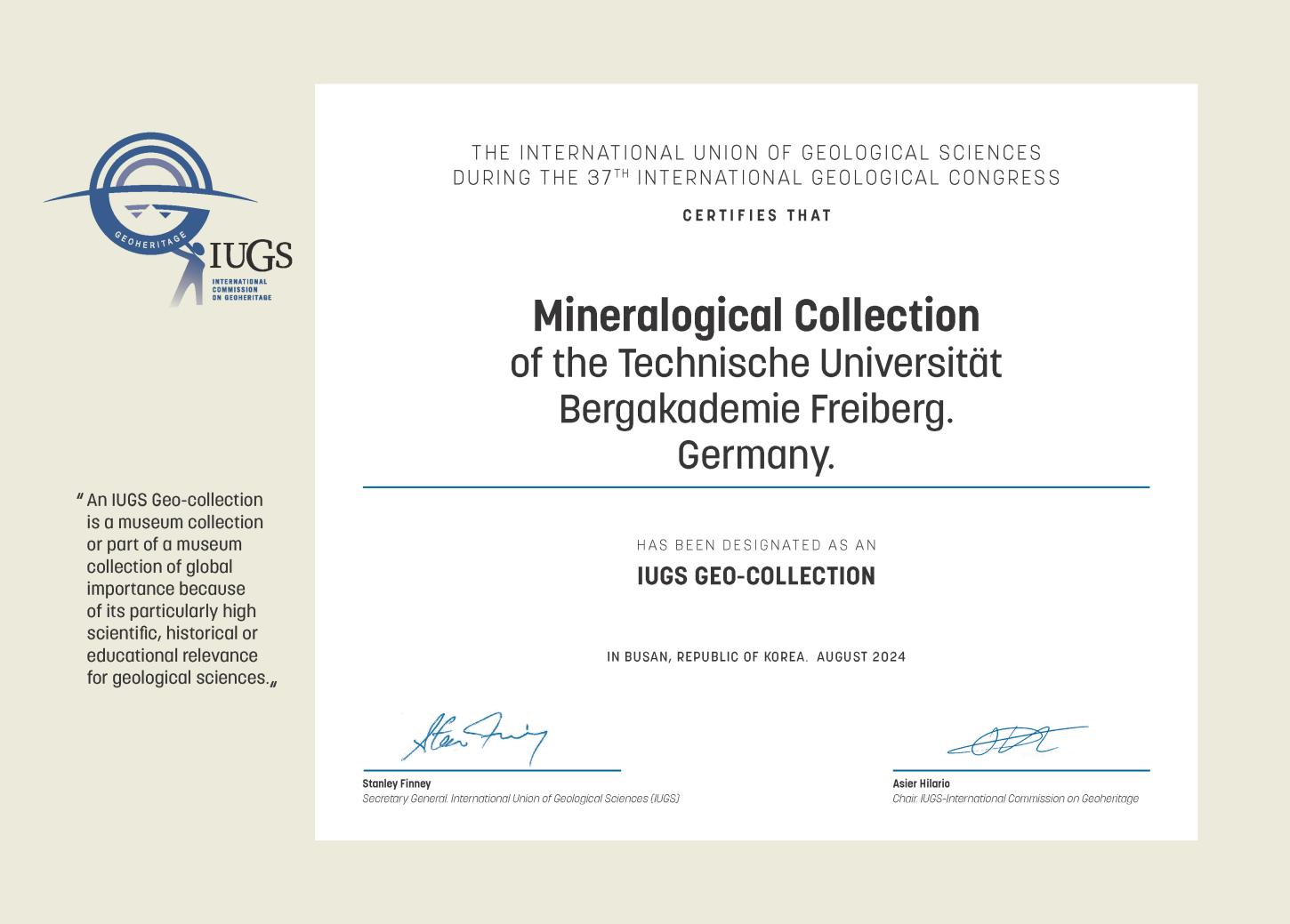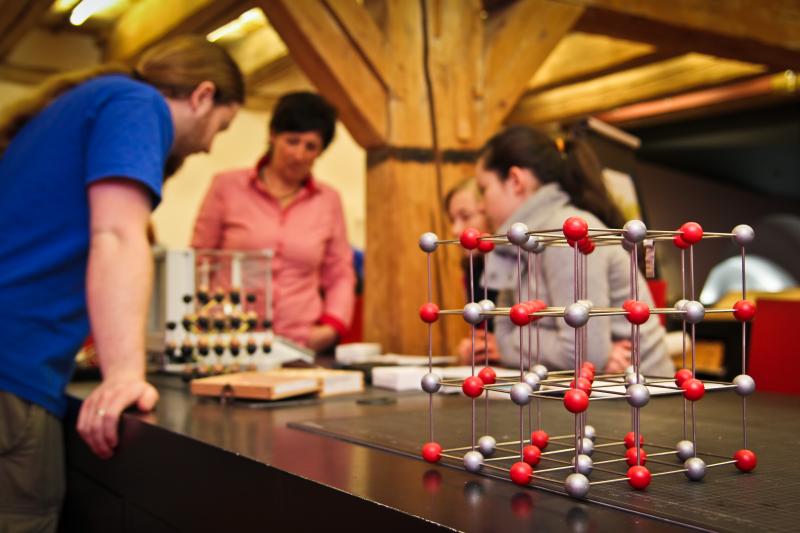07.10.2024
Great honour for mineralogical collections of the TU Bergakademie Freiberg
At the 37th International Geological Congress of the International Union of Geological Sciences (IUGS), which took place in Busan (Republic of Korea) in August 2024, the Mineralogical Collection of the TU Bergakademie Freiberg in the Abraham-Gottlob-Werner-Bau was selected as one of the first 11 IUGS Geo-Collections in the world.
An IUGS Geo-Collection is a museum or university collection of global importance due to its particularly high scientific, historical or educational relevance for the geosciences. The Freiberg collections were selected because they are among the oldest, largest and most beautiful collections of their kind in the world. The most important historical foundation of the collections are the originals of Abraham Gottlob Werner. However, the many first descriptions and originals by Breithaupt, Weisbach, Cotta, Stelzner, Kolbeck and Schumacher are also of great importance. A large number of stored samples from student theses, dissertations, research projects and excursions are available for scientific enquiries. However, the collections are not only used for the education of students or as a source for scientific research. They are open to the public and are used by school classes as part of the curriculum, as well as by tour operators and tourists.
The Freiberg collection is the only mineralogical collection to make it into the top 11 IUGS geo-collections. The other ten collections are primarily concerned with palaeontology or meteorites.
The International Commission on Geoheritage exists under the umbrella of the IUGS. Its task is to raise public awareness of the world's ‘geoheritage’. Three sub-commissions select the most important geo-locations, rocks and collections. For example, the Scheibenberg in the Ore Mountains became such a geo-location, as it was here that the plutonists and neptunists argued about the origin of basalt and the Rochlitz porphyry tuff, which is widely used as a decorative rock, became the first IUGS geoheritage rock.



